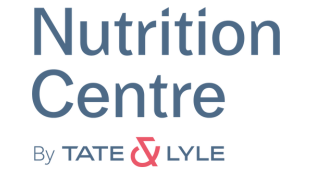Meet Jesse. He is a third-year biomedical student at Maastricht University in the Netherlands. Last summer he spent some time with Tate & Lyle as an intern with our Nutrition team. Combining his studies with his keen interest in sports, here he discusses the role nutrition plays in sport, and what he learned about the link between gut health and exercise.
Hi, I’m Jesse and I’m a third-year biomedical sciences student at Maastricht University in the Netherlands. From April until July 2022, I did my internship with the Tate & Lyle nutrition team.
In my free time, I’m a sports fanatic as I train in the gym at least 5 days a week and create my own dietary plans for optimal results. To perform at my best during every gym session, I have to make sure my body is healthy and recovered from previous workouts. Nutrition plays a major role here. Nutrition does not only affect the body, but also the billions of micro-organisms living within the gut. Because there’s still a lot of unknowns about the topic of gut microbiota, I was given the opportunity by Tate & Lyle to find out more about gut health and exercise.
Gut health in general
A healthy gut is characterised by a wide diversity in micro-organisms called the microbiota. The microbiota is involved in nutrient absorption, vitamin production, energy harvesting and immunity, all important factors in human health. Beside influencing health, the state of the microbiota is thought to influence exercise performance. The microbiota, furthermore, can produce metabolites called short chain fatty acids (SCFAs) from dietary compounds like fibre. SCFAs have also been related to performance when exercising.
The microbiota and exercise
There is not much evidence, other than a few recent studies that suggest a link between the microbiota and exercise. In studies done with rugby players and cyclists, it was found that these athletes had higher levels of beneficial microbiota. One study also found that athletes had a higher SCFA production, which was related to enhanced fitness and health. Unfortunately, it is unclear if these benefits came from just exercising or from the diets the athletes followed. It is possible the result of a combination of both because studies in athletes with more extreme diets or athletes practicing ultra-endurance sports showed a diverse and stable microbiota.
Nutrition and the gut
For both active people and sedentary people who want to improve their gut health, here are six tips that may influence your microbiota:
1. Eat plenty of fibre. Fibre can improve microbiota diversity and increase the level of healthy species. Fibre is used by the gut microbiota to produce SCFAs which are related to improved immunity and health. Plants, cereal grains, fruits, and vegetables are all rich sources of fibre.
2. Include fermented foods. Fermented foods, like dairy and fermented vegetables, contain a lot of nutrients, for the body and for the microbiota. These foods also contain living micro-organisms that can be part of the microbiota.
3. Consume polyphenol-rich foods. Polyphenols, found in dark chocolate, red wine and fruits, may stimulate the growth of beneficial bacteria, and inhibit the activity of pathogens.
4. Eat foods containing pre- and pro-biotics. Prebiotics (found in chickpeas, onions and garlic and many fibre-rich foods) are nutrients used by the microbiota while probiotics (found in yogurt with live and active cultures) are living micro-organisms. Both can be taken as supplement and may improve gut health.
5. Eat a wide variety of foods, especially plant-based foods. A wider variety of foods, and especially plant-based foods, provides a wider variety of nutrients. These different nutrients can be used by different micro-organisms and contribute to a more diverse microbiota.
6. Read labels. Avoid foods containing high amounts of saturated fats, sugars, and salt as they may negatively influence the microbiota.
Choose foods that contain high amounts of fibre or protein, which may contribute to improved gut health and exercise performance.
Hear Jesse's speak more to Melissa about his internship
Learn more about:
Tate & Lyle's Nutrition Centre
References
1 - Barton W., Penney N. C., Cronin O., Garcia-Perez I., Molloy M. G., Holmes, E. et al. "The microbiome of professional athletes differs from that of more sedentary subjects in composition and particularly at the functional metabolic level." Gut 67.4 (2018): 625-633.
2 - Cardona, F., Andrés-Lacueva, C., Tulipani, S., Tinahones, F. J., & Queipo-Ortuño, M. I. "Benefits of polyphenols on gut microbiota and implications in human health." The Journal of nutritional biochemistry 24.8 (2013): 1415- 1422.
3 - Clarke, S. F., Murphy, E. F., O'Sullivan, O., Lucey, A. J., Humphreys, M., Hogan, A. et al. "Exercise and associated dietary extremes impact on gut microbial diversity." Gut 63.12 (2014): 1913-1920.
4 - Gibson, G., Hutkins, R., Sanders, M. et al. Expert consensus document: The International Scientific Association for Probiotics and Prebiotics (ISAPP) consensus statement on the definition and scope of prebiotics. Nature reviews Gastroenterology & hepatology14, 491–502 (2017).
5 - Jang, L. G., Choi, G., Kim, S. W., Kim, B. Y., Lee, S., & Park, H. "The combination of sport and sport-specific diet is associated with characteristics of gut microbiota: an observational study." Journal of the International Society of Sports Nutrition 16.1 (2019): 1-10.
6 - Lattimer, James M., and Mark D. Haub. "Effects of dietary fiber and its components on metabolic health." Nutrients 2.12 (2010): 1266-1289.
7 - Larsen, O. F. A., Claassen E. "The mechanistic link between health and gut microbiota diversity." Scientific reports 8.1 (2018): 1-5.
8 - Leeuwendaal, N. K., Stanton, C., O’Toole, P. W., & Beresford, T. P. "Fermented Foods, Health and the Gut Microbiome." Nutrients 14.7 (2022): 1527.
9 - Mohr, A. E., Jäger, R., Carpenter, K. C., Kerksick, C. M., Purpura, M., Townsend, J. R., et al. "The athletic gut microbiota." Journal of the International Society of Sports Nutrition 17.1 (2020): 1-33.
10 - Petersen, L. M., Bautista, E. J., Nguyen, H., Hanson, B. M., Chen, L., Lek, S. H., ... & Weinstock, G. M. Community characteristics of the gut microbiomes of competitive cyclists. Microbiome, (2017): 5(1), 1-13.
11 - Queipo-Ortuño, M. I., Boto-Ordóñez, M., Murri, M., Gomez-Zumaquero, J. M., Clemente-Postigo, M., Estruch, R., et al. Influence of red wine polyphenols and ethanol on the gut microbiota ecology and biochemical biomarkers. The American journal of clinical nutrition, 95(6), (2012): 1323-1334.

Nutrition plays a key role in consumers’ lives
We address the health and nutritional needs of your consumers using our science-based innovative ingredient solutions. Discover how in our Nutrition Centre...
